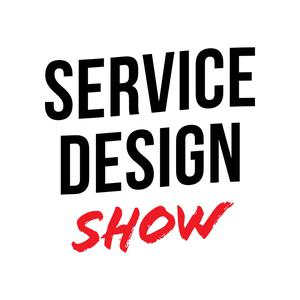
Service Design Show
Service Design Show
A show where we go beyond the basic service desig…
- 1 hour 7 minutesHow to Use Your Dreams to Design Services / Courtney Morgan / Ep. #219
You've never heard this on the Show before...
I'm referring to a design tool that most people disregard, even laugh about when they first hear about it.
They say it's childish, something you can't take seriously in a professional context.
But as you'll hear in today's conversation, this tool holds immense power.
Not only that, it helps you better align with your true self and what you truly want to contribute to the world.
And the best thing? You already have this tool in your possession. We all do.
So, what is this magical tool?
It's your dreams.
Now, I know what you're thinking. Dreams, really?!
But hear me out, it's actually not that crazy.
Why do we always talk about design thinking and design doing, and not about design dreaming?
If anything, I'd argue that the times we live in demand we dream more to envision a better future.
Our amazing guest, Courtney Morgan, helps us tap into the power of our dreams.
She shares practical examples of the power of collective dreaming.
We address the misconceptions around dreaming and discuss how to get people to tap into and share their dreams in a design process.
You'll notice that the conversation doesn't begin with dreams, but we naturally gravitate in that direction and fall down the rabbit hole.
So, if you want to go beyond the usual design tools and methods and tap into something truly transformative... make sure you don't miss this episode.
A simple practice to become more aware of your dreams is to start writing them down. This is what I've incorporated into my morning routine. Very curious to see what effects this will have in a few months.
Enjoy and keep making a positive impact.
~ Marc
--- [ 1. GUIDE ] ---
00:00 Welcome to episode 219
03:30 Defining "one percent"
05:00 Focus of the 1%
13:00 Non-profit & community
13:50 Importance of lived experiences in work
17:00 Building trust first
18:30 What happens with lack of trust
21:30 Designer vs Community member role
24:00 A "World Creator" role
26:30 5 years ago vs today
30:30 What is efficiency?
33:00 What does good look like
34:30 Patience and her son
36:30 The role of dreaming
39:00 Courtney's dream
41:00 How we can become better dreamers
43:30 Prejudice against collective dreaming
47:30 Unsurppressing dreams
54:00 Advice she wished someone told her
59:30 Question to ponder
--- [ 2. LINKS ] ---
--- [ 3. CIRCLE ] ---
Join our private community for in-house service design professionals.
16 January 2025, 7:00 am - 1 hour 6 minutesKey Lessons from a Service Design Community / #Circle Special
This one is a bit different...
Not the usual interview that you're used to.
In this episode, you'll actually hear me answering the questions.
Why? Well, it's become a bit of a tradition to start the year by reflecting on the lessons learned while building the Circle community.
The Circle started 3.5 years ago as an idea to see what would happen if we created a safe space for in-house service design professionals to connect and share regularly.
Today, it's grown to a healthy size with members from companies across the globe and in almost any industry you can imagine — from big tech to church organizations (I kid you not!). Service design professionals are everywhere these days.
I'm very grateful for where the community is today, but it certainly hasn't been a straight line up.
Designing a service (which is essentially what our community is) for service designers is quite hard, who would have thought? ;)
So, for this episode, I sat down with Ru Butler who's one of our Circle Council members to discuss the biggest wins, challenges, and ambitions for the coming year.
Even if you're not working in-house, I think you'll still enjoy this behind-the-scenes look at how we're thinking about and trying to design our community.
I'd love to hear what you think of this episode format. Would you like to hear it more often? How could we make it better? Any other feedback is welcome, too.
Send me a message or reach out on LinkedIn.
Happy 2025 and take care,
Marc
--- [ 1. GUIDE ] ---
00:00 The Circle 2024 Special episode
03:00 Who is Ru
04:30 What stood out last year
09:30 Marc's key motivations
13:00 Ru's Circle Highlights: 1-on-1s
17:30 Benefits of 1-on-1s: accountability
19:00 Leading the Circle community
24:30 Favorite sessios in 2024
31:00 The community's growth
37:00 The importance of community
43:00 2025 Vision and The Loop
46:00 The follow-through
48:30 Seasons for the Circle 2025
54:00 2025 Goals
58:00 For the Self-Doubting Designers
--- [ 2. LINKS ] ---
- https://www.linkedin.com/in/rubutler
- https://www.linkedin.com/in/marcfonteijn
- Advancing Service Design Talk: Increase your confidence, influence, and impact
--- [ 3. CIRCLE ] ---
Join our private community for in-house service design professionals.
https://servicedesignshow.com/circle
9 January 2025, 7:00 am - 1 hour 9 minutesJourney Management in 2025: Trends, Challenges, and Predictions / Jochem van der Veer / Ep. #218
First of all, I want to wish you a very happy 2025.
We're starting the new year with a bang.
Journey Management has been a hot topic for the last two years, and for good reason.
The shift from mapping to management might seem small, but it's a major change in how we and our clients approach things.
If you've been following the Show for a while, you know we are keeping up with these developments as they unfold.
So, I thought it would be great to invite a good friend and long-time partner of the Show, Jochem van der Veer, back to kick 2025 off with some predictions.
As CEO of TheyDo, Jochem is building one of the most innovative companies in this space. So I think it's fair to say that he has a front-row seat to how companies are adopting (or not) Journey Management.
In this conversation, we discuss how journey management has evolved, the challenges of scaling it, which organizations are succeeding, and what's next (including AI's influence).
Oh, and we announce a new conference...
Join us for a great episode that's going to give you a head start on your Journey Management journey this year.
What are YOUR predictions for this year? Leave a comment on YouTube (or Spotify). It'll be fun to revisit them next year 🙂
Enjoy the conversation, and once again Happy 2025!
Take care,
~ Marc
--- [ 1. GUIDE ] ---
00:00 Welcome to episode 218
05:00 Looking back at the previous episode
06:45 Market shifts
09:00 Churn discussion
13:45 What's changed in TheyDo
15:45 Unexpected design challenges
19:30 Journey Management cornerstones
21:00 Automating everything
25:00 Jochem's Journey Management view
29:00 Journey as a tool
33:15 Cross-Functional challenges
36:00 Prioritization rituals
39:30 Customer alignment
45:00 Team adoption patterns
48:30 Specific problem solving
50:00 Industry roadblock
53:30 2026 hopes
54:30 Upcoming Conference
1:02:00 Jochem's 2025 outlook
1:03:00 Chat interface
1:07:00 Question to ponder
--- [ 2. LINKS ] ---
--- [ 3. CIRCLE ] ---
Join our private community for in-house service design professionals.
2 January 2025, 9:30 am - 1 hour 36 secondsStop designing WITH your users! There is a better way. / Sloan Leo Cowan / Ep. #217
There's a problem with the current design process that often goes unnoticed...
A problem that can lead to less-than-ideal outcomes or, even worse, harm certain communities.
To understand this, we must acknowledge our huge responsibility as design professionals. We're often the only ones advocating for our users' needs, the voice of those who aren't in the room.
It's a privilege we shouldn't take lightly.
We make decisions, and judgment calls for the people we're designing for. Of course, we do our best with the best intentions, but we always will fall short.
Why? Because we aren't the users. We don't live their lives or experience their struggles.
Sure, let there be no doubt: having someone advocate for users is a good start, but it's not enough.
We can do better; we must do better.
Our guest, Sloan Leo Cowan, helps us see what "better" looks like.
The key is to move away from "designing for" or even "designing with" users and move towards "designing by" them. It means giving up control and power. Sound impossible?
Sloan Leo shares practical examples of how they've achieved this in their work.
This episode will show you a way forward if you care about creating more inclusive and equitable work.
Stop designing WITH your users! There is a better way.
As you'll hear, Sloan Leo's perspective on design challenges the status quo. We really need this to push the boundaries of design and ensure it stays relevant.
Keep making a positive impact!
Take care,
~ Marc
--- [ 1. GUIDE ] ---
00:00 Welcome to Episode 217
04:00 Sloan's social sector journey
08:15 Defining Community?
10:15 Service design "habits" (issues)
12:45 Neutrality in Interpretation
15:15 Facilitator vs. Interpreter Roles
18:45 Facilitating towards beliefs
19:30 Power Dynamics in Facilitation
21:15 Binary thinking in service design
26:45 Issue: Persona Development & Gender
31:45 Origins of Community Design Issues
36:00 How to approach the large scale
38:15 Open source approach
40:30 The challenges for service designers
41:45 Benefits for Communities and Designers
43:45 Advice for Aspiring Designers
47:15 Recommended Resources
51:45 Proudest Achievements
54:15 Keys to Success
56:45 Additional Resources
57:30 Questions for Reflection
--- [ 2. LINKS ] ---
Pronouns they/he
--- [ 3. CIRCLE ] ---
Join our private community for in-house service design professionals.
19 December 2024, 7:00 am - 1 hour 1 minuteThe Secrets behind Research that Scales / Kate Towsey / Ep. #216
There is no service design...
Without high-quality research.
Sure, we all know that.
But doing good research is hard.
Kate Towsey, often called the inventor of the ResearchOps field, can certainly attest to this.
If you're a dedicated listener of the show, you might remember Kate from our conversation about a year ago where she shared that she was writing a book.
Well, that book, titled "Research that Scales", has officially been published!
And with a 4.9/5 rating on Amazon, it seems to have struck a chord with readers.
Of course, we had to get Kate back on the show to discuss it.
In this conversation we delve into topics like:
- Do we need to scale research, and if so why?
- What does "scale" actually mean in the context of research?
- When should you start thinking about scaling?
- What are the key steps to scaling research?
- What role can AI play in all of this? Will it take over our jobs?
- Why did it take Kate 3.5 years to publish the book?
And as always, that's just the tip of the iceberg.
It's hard to imagine a service design professional who wouldn't be interested in the topics we cover in this episode.
Good research isn't just a nice-to-have; it's a must.
Without giving away too many spoilers, I found it fascinating that it's not actually research that you need to (or can) scale, but something else. Something that we as a community are pretty good at.
Can you guess what it is?
Enjoy and keep making a positive impact!
~ Marc
--- [ 1. GUIDE ] ---
00:00 Welcome to Episode 216
03:00 Quick overview about scaling research
04:00 Why she wrote the book
09:30 Pandemic's impact on the book
13:00 Research rabbit hole
15:00 Unscalable Research: What to Avoid
18:30 What is enough research?
22:00 The problem she saw
25:00 The main bottlenecks
27:45 Libriarian's role in making the change
31:00 How the process work
33:00 Knowledge as a network vs tree
35:30 Maximizing efficient use of library
39:00 Designing the system
41:00 Knowledge vs. Learning: Value Proposition
43:00 Cost center vs value center
47:00 AI and Research: A Synergistic Future
49:00 Cost of scaling: A Trade-off
51:00 Strategic approach to scaling
53:00 How to know when to scale
54:30 Her readers insights
56:00 Upcoming masterclasses
58:00 Resources
58:30 Food for thought
--- [ 2. LINKS ] ---
- LinkedIn: https://www.linkedin.com/in/katetowsey/
- Website: https://katetowsey.com/
- Substack: https://katetowsey.substack.com
--- [ 3. CIRCLE ] ---
Join our private community for in-house service design professionals.
5 December 2024, 7:00 am - 1 hour 13 minutesThe RIGHT way to do strategy in an uncertain world? / Peter Compo / Ep. #215
What is strategy... A plan for how you intend to achieve your goals? That's how a lot of people define strategy. But there's a problem with this rigid approach...
As Mike Tyson wisely said once: "Everyone has a plan until they get punched in the face." Most strategies are too prescriptive about how the goal needs to be achieved.
But we live in a VUCA world where it's getting harder and harder to predict what will happen, even just weeks ahead. The sphere of what an organization can control is shrinking (and control is an illusion anyway).
What seemed like a wise action last week might be irrelevant today, thanks to new technology, a sudden global crisis, or a certain election outcome...
Following your strategy in this scenario might mean you're executing what you agreed to, but it could very well lead you away from your intended goal.
So, when there is so little we can control and predict, does that mean we shouldn't do any strategizing at all? Certainly not. We just need to adopt a more emergent approach.
We still need a plan to align everyone, but one that allows for more flexibility and deciding in the moment what the right next step is.
What does this type of strategy look like, and how do we get there? That's something Peter Compo has written a great book about, and I've invited him on the Show to share his learnings with us.
We talk about:
- Why research is becoming an increasingly important capability for any organization.
- How we can know we'll achieve our goals if we don't know at the start which actions to take.
- And how to help an organization used to control and prediction embrace uncertainty and flexibility.
I know this episode will resonate with many service design professionals. It ties strongly to our mantra of "doing the right things" and not just focusing on "doing things right."
Strategy can be a very abstract term without much substance. But what I appreciated in our conversation is that Peter makes things super practical. It's time to roll up your sleeves and get to work on your strategy.
Enjoy and keep making a positive impact.
~ Marc
--- [ 1. GUIDE ] ---
00:00 Welcome to Episode 215
03:30 Music and emergence
06:00 How he got into writing the book
10:30 Pete's perspective in strategy
16:00 The theory of emergence
20:00 constraints & trust
26:30 Bridging the gap of uncertainty
30:30 Letting Go of Control
36:30 Examples of good metrics
41:00 False learning organization
46:30 Trusting your team
50:30 Aspiration-bottleneck triad
57:00 another recommendation
59:00 Strategy matrix
01:04:00 Personal Impact on writing
01:09:00 Resources
1:11:00 Question to ponder
--- [ 2. LINKS ] ---
- https://www.linkedin.com/in/petercompo/
- The Emergent Approach to Strategy (book) by Peter Compo - www.emergentapproach.com
- Peter Compo Music - https://www.youtube.com/channel/UCJsn2zbnx8dwvHJrisdkAtg
--- [ 3. CIRCLE ] ---
Join our private community for in-house service design professionals.
21 November 2024, 7:00 am - 33 minutes 21 secondsAdvancing Service Design 2024 / Program Deep Dive with Sylvie Abookire
An exciting new conference is just around the corner, Advancing Service Design 2024. We recently had a chat with Lou Rosenfeld, the conference organizer, about key ideas behind the conference.
Now, we're doing a deep dive into the two-day conference program with Sylvie Abookire, who's part of the curation team. In this episode, you'll hear about the main themes, the inspiring (and somewhat surprising) speakers, and of course how it all ties together to advance our field.
Sure, you can also get some of this info on the conference website, but I promise this conversation is much more fun 🙂
I'll be presenting at the conference about the latest insights from the Salary Report and lessons learned from building the Circle community. Want to join one of my sessions? Send me an email or reach out on LinkedIn, and I'll let you know how you can attend even without a conference ticket.
~ ~ ~
🎟️ Want to attend Advancing Service Design? Well, you're in luck!
💰 Answer the simple question over here at https://www.servicedesignshow.com/asdc2024-survey to get a 10% discount on your ticket. But that's not all!
🏆 When you sign up using this code, you'll automatically enter a contest where you can win sweet prizes.
--- [ 1. GUIDE ] ---
00:00 A Special Episode with Sylvie
02:45 Sylvie's role in the conference
04:30 Conference schedule & format
06:00 Biggest conference challenge
07:30 The final 8 speakers
10:00 What the conference means to Sylvie
12:00 Day 1: Designing in the system
14:30 Day 1: format
16:00 Day 1: The panel
17:00 Audience interaction
19:00 Day 2: Designing with the system
22:30 How we hope the conference impacts
24:00 Sylvie's workshops after the conference
27:00 The most fun part of the conference
28:00 Key Takeaways
28:00 Visibility & Impact
32:00 Conference Details & Tickets
32:30 Giveaway
--- [ 2. LINKS ] ---
- Get your tickets here - https://rosenfeldmedia.com/advancing-service-design/
--- [ 3. CIRCLE ] ---
Grow your confidence, influence, and impact! Join the community for in-house service design professionals.
14 November 2024, 7:00 am - 1 hour 45 secondsWhy People Aren't Listening to You - And How to Fix That / Gabrielle Dolan / Ep. #214
I remember being subscribed to this email newsletter from a guy named Josh, all about email marketing (kind of meta)...
Every single day, a new email from Josh would pop up in my inbox, and I'd open it right away.
These emails were different, a bit weird even, but in the best way possible. Each one would start with something that felt totally random, a story about something Josh experienced. No mention of email marketing whatsoever.
But every time I was hooked. I just had to know how the story ended.
And then, bam, right at the end, with just two or three lines he'd tie it all back to email marketing in a way that just clicked.
Those emails weren't just informative; they were actually enjoyable, to the point that I looked forward to them.
Now being able to hold someone's attention like that always seemed like a magic superpower to me... but I learned that it's not.
In this episode, Gabrielle Dolan, who's been teaching the craft of storytelling for over 20 years, reveals how you can grow your storytelling skills and use them to communicate your message in a way that stick and, most of all inspires action.
And as service design professionals, we know that getting people to take action is critical for change but also very challenging.
So whether you consider yourself a natural storyteller or not, this episode is packed with practical wisdom you won't want to miss.
Josh, by the way, stopped sending his daily emails a while ago, but as you've noticed his lessons have stuck with me.
Enjoy the episode and keep making a positive impact!
Take care,
~ Marc
--- [ 1. GUIDE ] ---
00:00 Welcome to Episode 214
03:30 Power of stories
06:00 Why stories make communication better
08:00 Dealing with skepticism
13:00 Why Organizations seek facts over stories
14:30 Story-Resistant Culture
18:00 Practical tips in becoming better storytellers
23:00 Finding your stories
24:00 Using spreadsheets
28:00 How to be comfortable using them
31:30 How to see if it's working (Tracking progress
34:00 Indicators of Success
37:00 Potential of backfiring
39:00 Gauging level of emotion
42:00 Advise from Ral
44:00 How Ral's storytelling evolved
45:30 How to use AI in storytelling
48:30 Storytelling vs acting
49:30 What's next in her storytelling journey
51:30 What kept her going
52:30 Resources
55:30 Question to ponder
--- [ 2. LINKS ] ---
- https://www.linkedin.com/in/gabrielledolan/
- https://gabrielledolan.com/
- Magnetic Stories by Gabrielle Dolan (Book) - https://a.co/d/aA780d8
--- [ 3. CIRCLE ] ---
Join our private community for in-house service design professionals.
7 November 2024, 7:00 am - 34 minutes 57 secondsWhat's this new SD conference all about!? / Advancing Service Design Conference 2024 (Part 1) with Lou Rosenfeld
I'm excited... There's a brand new conference just around the corner – Advancing Service Design – and it's organized by none other than Rosenfeld Media, the publisher behind some of the most iconic books in our field.
Now you might be thinking... another conference? But trust me, this one is different. That's why I invited Lou Rosenfeld himself onto the Show to give us the inside scoop.
In this episode, you'll learn:
* Why Lou decided to launch a brand new conference.
* Who is Advancing Service Design for?
And what makes the conference different.
So if you're curious about what all the excitement is about, make sure to tune in to this conversation.
And as you can guess by the title there will be a part 2 where we'll dive deep into the full conference lineup and speakers.
---
Want to attend Advancing Service Design? Well, you're in luck!
Answer the simple question over here https://www.servicedesignshow.com/asdc2024-survey to get a 10% discount on your ticket. But that's not all!
When you sign up using the provided code, you'll automatically enter a contest where you can win sweet prizes.
--- [ 1. GUIDE ] ---
00:00 Welcome to a Special Episode
01:30 Q&A with Lou
03:30 Long-Awaited Service Design Conference
06:00 Why Service Design Now?
08:45 Conference Program
12:00 Target Audience
14:00 Conference Success Secrets
19:00 Benefit in Time, Support, and Labor prep
20:00 Why Ben Reason and Patrick Quattlebaum
23:00 Speaker Insights
26:00 Speaker highlights
30:00 What to expect
33:00 What Lou looks forward to
36:30 How to get tickets
39:15 Topics to stay tuned to
--- [ 2. LINKS ] ---
- Get your Advancing Service Design tickets here: https://rosenfeldmedia.com/advancing-service-design/
--- [ 3. CIRCLE ] ---
Join our private community for in-house service design professionals.
31 October 2024, 7:00 am - 1 hour 2 minutesConfessions of a Journey Management Pioneer / Florian Vollmer / Ep. #213
Sure, everyone's talking about Journey Management, but few are actually doing it well... It's one thing to map out customer journeys, but quite another to truly manage them.
The frameworks and models look great on paper, but reality is often far messier. Most organizations struggle to get a handle on even one journey, let alone a dozen!
So I'm excited that Florian Vollmer, a true pioneer in this field, returns to the Service Design Show to share his hard-won wisdom. You might remember him from his previous appearance on the Show where he talked about managing 100+ journeys at NCR.
What's fascinating is that Florian got a rare opportunity when starting his new role at Autodesk – a chance to rebuild a Journey Management practice from the ground up, applying all the lessons from his previous experience.
This is your classic "I wish I knew everything I know now at the start of this project. It would have been completed twice as fast and at half the cost."This time, we dive deep into the nitty-gritty of Journey Management, tackling tough questions like:
- Who really owns the journey?
- Are dedicated tools essential or just a distraction?
- Why getting granular at the touchpoint level is essential?
- What are the biggest challenges to launching Journey Management inside an organization?
And the million-dollar question: how do you get buy-in and funding when you're just starting out?
So if you're already knee-deep in Journey Management or just starting to explore it, I'm sure you'll appreciate Florian's honest perspective from the trenches.
One of my biggest takeaways from this conversation was that, as Florian explains in detail, this is really hard work. So you have to have patience and be kind to yourself. Amen to that!
Enjoy the conversation and keep making a positive impact.
Take care,
~ Marc
--- [ 1. GUIDE ] ---
00:00 Welcome to Episode 213
04:00 Looking back EP 168
05:15 Who is Florian
07:00 What is Journey Management
08:30 the momentum of journey management right now
13:00 How to manage customers
17:00 Balancing context switching
21:00 Evolving Role Perceptions
23:30 good quality vs great quality
26:00 Organic conversations vs Priorities
35:30 Who owns the journey?
39:30 Building momentum for change
42:30 Biggest key lessons
46:00 Journey management vs collaborations
48:30 Understanding journey management
55:15 Stay tuned for another episode with Florian
56:30 Resources
--- [ 2. LINKS ] ---
- https://www.linkedin.com/in/florianvollmer/
- Journey Management Alliance
- https://journeymanagement.substack.com
--- [ 3. CIRCLE ] ---
Join our private community for in-house service design professionals.
24 October 2024, 6:00 am - 1 hour 9 minutesA New Approach to Measuring Design's Impact / Stacey Barr / Ep. #212
This might be the most profound conversation I've recorded this year...
What if I told you that the puzzle of how to measure and quantify the value of design has already been solved?
I know, it sounds too good to be true, right? But hear me out.
We all struggle to express the value of design in metrics that businesses understand. The result?
We often cut ourselves short because we can't present the impact of our work in a neat spreadsheet. It's frustrating, especially when we see decisions being made that make no sense to us based on "our data".
There are many reasons why it's hard to quantify the return on investment of (service) design. We're creating value on a systemic level. We're doing it in co-creation, so attribution is a nightmare. The effects of our work sometimes take a long time to materialize. And the list goes on.
So, is all hope lost? Do we throw our hands up in the air? Of course not.
Recently, while researching better alternatives to hierarchical goal structures (which are inherently broken), I stumbled upon an article by Stacey Barr. I had never heard of Stacey or her work before. This discovery led me down a massive rabbit hole.
Stacey is a leading expert on performance measurement. Over the last 20 years, she has developed and refined a methodology to measure, track, and improve performance that's being used in over 40 countries.
The more I read about this methodology, the more I felt that this could be the breakthrough we've been looking for in the design field. I have to be careful not to raise expectations too high, but...
Stacey is an unusual guest for the Show. Someone who's completely outside of our design bubble. And that's why this turned out to be such an interesting and eye-opening conversation.
In this episode, you'll learn that there is a systemic and reliable approach to figuring out what and how you can measure the impact of design. You can take this approach and apply it to your work today! And best of all, as you'll hear, the approach builds upon a lot of the elements that we as a design community are already familiar with.
I hope this episode will show you that we can actually get to measuring the things that matter, not just the things that are easy to measure.
And maybe, even maybe, get you a little bit excited about measurement (yes, that's actually possible)!
A part that I really liked in our conversation is when we rolled up our sleeves, took an abstract goal like "increasing the sense of belonging," and went step-by-step on how to break this down into more concrete and quantifiable metrics. This exercise really brought things home for me.
Keep making a positive impact!
~ Marc
--- [ 1. GUIDE ] ---
00:00: Welcome to Episode 212
04:00: Marc's rant on KPIs
05:30: Who is Stacy
08:00: Measuring service design
09:30: Evidence and numbers
13:00: Circle example
16:00: Measuring qualitative aspects
18:00: Quantifying "sense of belonging"
21:00: Circle buddies and belonging
27:00: If you can't experiment...
29:30: Client's vague goals & measurement
34:00: Handling vague ideas & measurement
38:30: Showing value and impact
39:00: Individual vs. team effort
43:00: Qualitative approach
44:00: Significant change method
48:00: Circle community tension
52:00: Measuring systemic impact
58:00: Perfection and systemic impact
1:00:30: Importance of the whole story
1:02:30: Compassion and starting small
1:04:00: Starting small with systemic thinking
1:06:30: Resources for systemic design
--- [ 2. LINKS ] ---
- https://www.linkedin.com/in/staceybarr/
- Results Map: https://www.staceybarr.com/measure-up/a-measurable-strategy-on-a-single-page/
- Streamlined PuMP approach: https://www.staceybarr.com/measure-up/12-easy-steps-get-started-lean-kpi-methodology/
- What is a measure: https://www.staceybarr.com/measure-up/kpis-performance-measures/
--- [ 3. CIRCLE ] ---
Join our private community for in-house service design professionals.
10 October 2024, 6:00 am - More Episodes? Get the App
Your feedback is valuable to us. Should you encounter any bugs, glitches, lack of functionality or other problems, please email us on [email protected] or join Moon.FM Telegram Group where you can talk directly to the dev team who are happy to answer any queries.
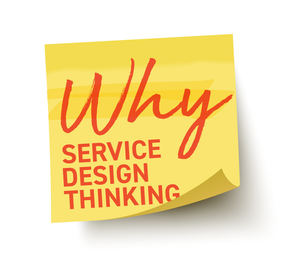 Why Service Design Thinking
Why Service Design Thinking
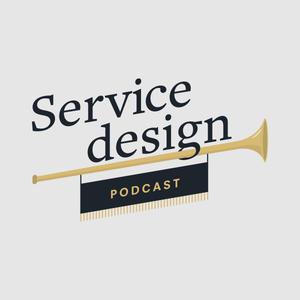 Service Design Podcast
Service Design Podcast
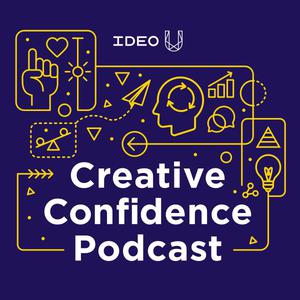 Creative Confidence Podcast
Creative Confidence Podcast
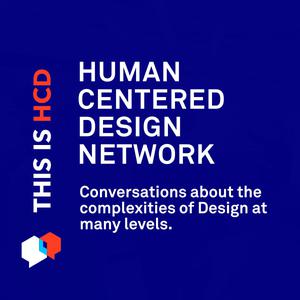 The Human Centered Design Podcast
The Human Centered Design Podcast
 Design Better
Design Better
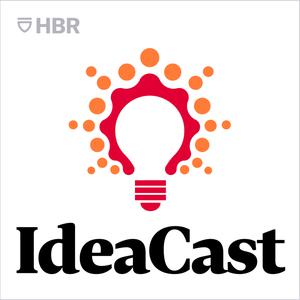 HBR IdeaCast
HBR IdeaCast